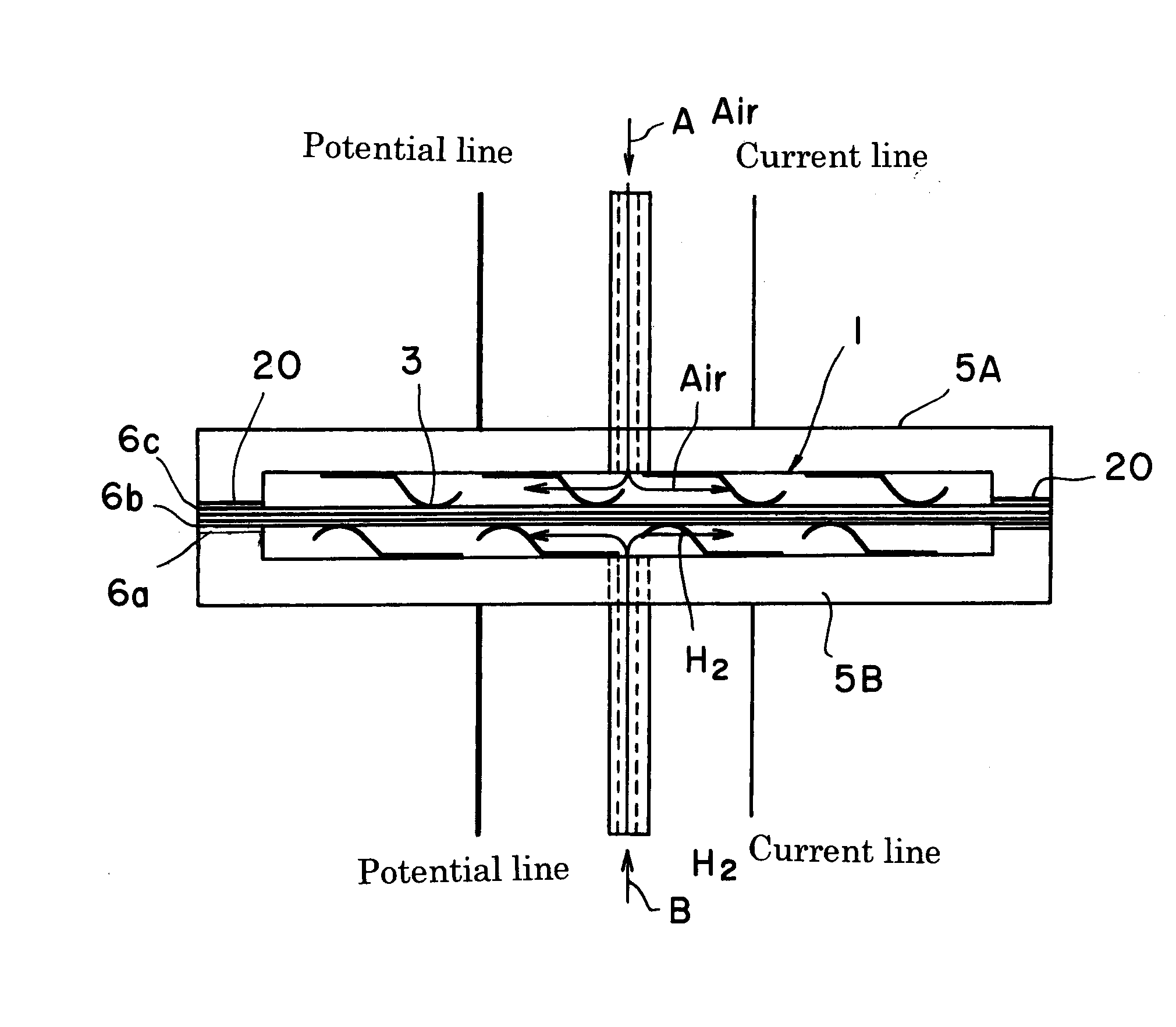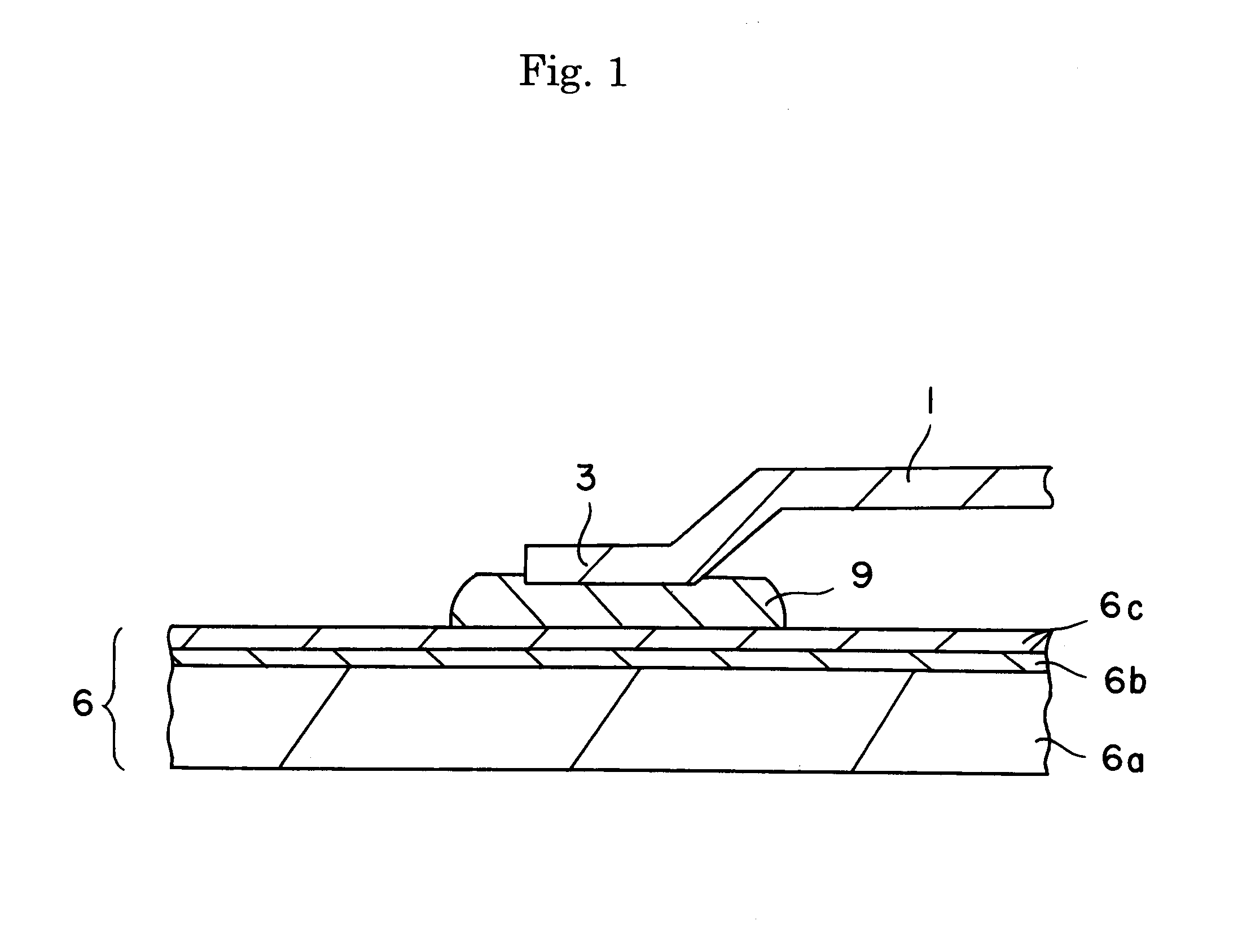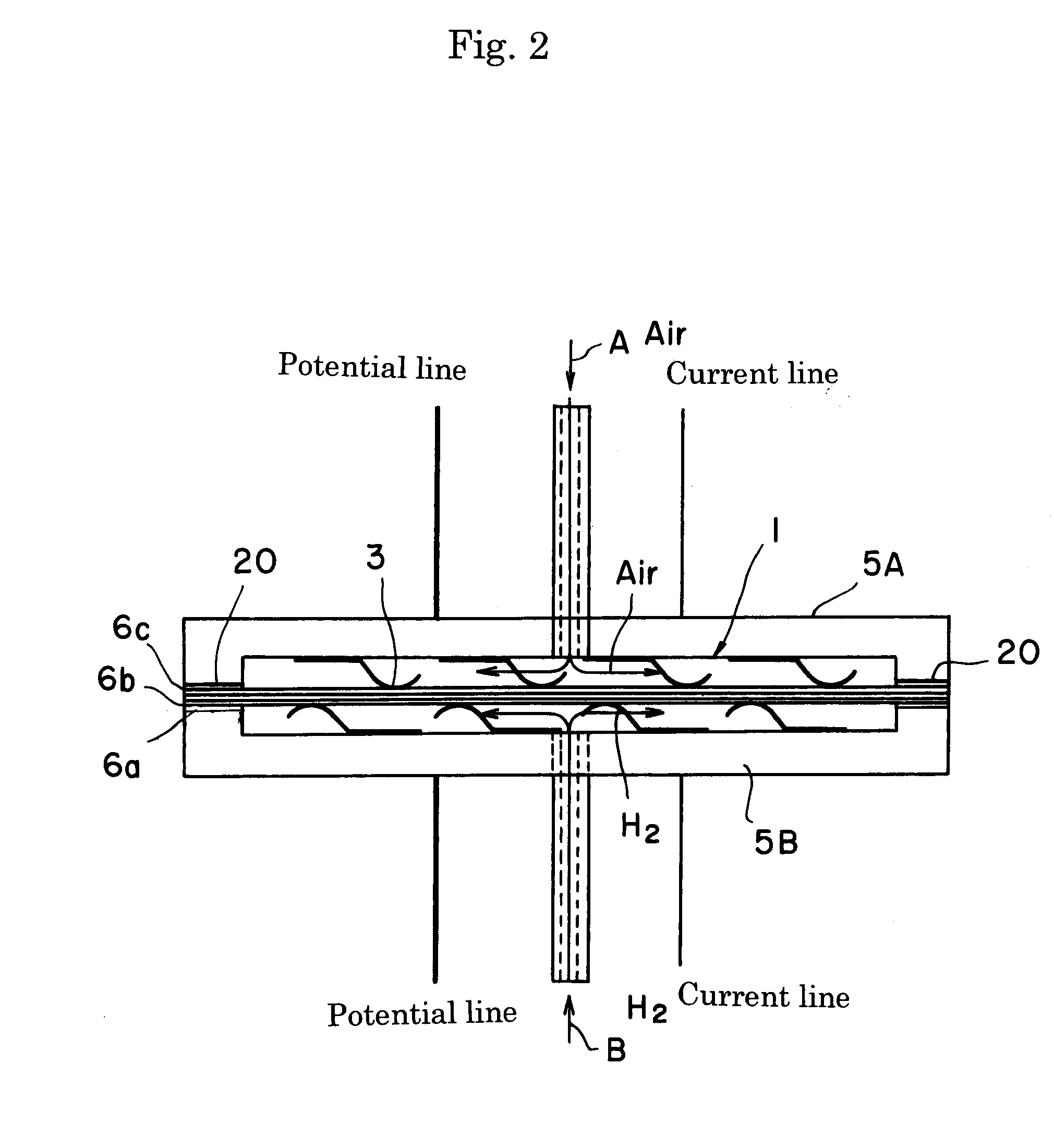Method of manufacturing transition metal oxide having spinel structure
- Summary
- Abstract
- Description
- Claims
- Application Information
AI Technical Summary
Benefits of technology
Problems solved by technology
Method used
Image
Examples
experiment 1
Evaluation of Bonding Strength
[0052]The bonding strength to the cell electrode of the conductive bonding agents in the inventive example and the comparative example was evaluated by using an assembly illustrated in FIGS. 3(a) and 3(b).
(Preparation of Bonding Paste)
[0053]Oxide powder of the transition metal 1 and that of the transition metal 2 were weighed according to a molar ratio shown in the Table 1, and mixed and pulverized in a pot mill for 24 hours to obtain slurry. The obtained slurry was dried by an oven at 80° C., and then sintered for 1 hour at 800° C. in the air atmosphere to synthesize the spinel type complex oxide. The synthesized spinel was pulverized in the pot mill again to obtain the complex oxide powder with an average particle diameter of 0.5 p.m. To this powder, ethyl cellulose as the binder and terpineol as the solvent were added to prepare the bonding paste.
[0054]Further, metal powder of the transition metal 1 and that of the transition metal 2 were weighed in ...
experiment 2
Power Generation Test
[0062]A solid oxide fuel cell using the fuel electrode as a substrate was prepared as schematically illustrated in FIG. 2.
(Preparation of Fuel Electrode Substrate)
[0063]50 parts by weight of nickel oxide powder having an average particle diameter of 1 μm and 50 parts by weight of yttria-stabilized zirconia powder (8YSZ, “TZ-8Y”: produced by Tosoh Corporation) were mixed, and polyvinyl alcohol (PVA) was added as the binder to prepare slurry. This slurry was dried and granulated with a spray drier to obtain powder for fuel electrode substrate. The granulated powder was molded by a metal mold pressing method to obtain a disk having a diameter of 120 mm and a thickness of 1.5 mm. Thereafter, the disk was sintered for 3 hours at 1400° C. in air in an electric furnace to obtain a fuel electrode substrate 6a.
(Formation of Solid Electrolyte Film)
[0064]Water and the binder were added to 8 mol % yttria-stabilized zirconia powder, and mixed in a ball mill for 16 hours. Th...
experiment 3
Average Particle Diameter and Characteristics of Material Metal Powder
[0072]In this experiment, an investigation relating to average particle diameters of Mn metal powder and Co metal powder was performed in the case of MnCo2O4.
[0073]As shown in the Table 3, the bonding agent was adjusted by combining various particle diameters so as to have a spinel composition.
[0074]Specifically, particle diameters of the metal manganese powder and the cobalt powder were changed as shown in the Table 3. The manganese powder and the cobalt powder were mixed in a molar ratio of 1:2. To this mixed powder, ethyl cellulose as the binder and terpineol as the solvent were added, and the added powder was mixed using a mortar to prepare the paste. This paste was dried for 1 hour at 100° C. Thereafter, the paste was sintered for 1 hour at 900° C. in air.
[0075]The paste of each example was applied to a surface of the air electrode 6c on the air electrode disk 11 and a surface of the metal disk 10 prepared in...
PUM
| Property | Measurement | Unit |
|---|---|---|
| Particle diameter | aaaaa | aaaaa |
| Pressure | aaaaa | aaaaa |
| Pressure | aaaaa | aaaaa |
Abstract
Description
Claims
Application Information
 Login to View More
Login to View More - R&D
- Intellectual Property
- Life Sciences
- Materials
- Tech Scout
- Unparalleled Data Quality
- Higher Quality Content
- 60% Fewer Hallucinations
Browse by: Latest US Patents, China's latest patents, Technical Efficacy Thesaurus, Application Domain, Technology Topic, Popular Technical Reports.
© 2025 PatSnap. All rights reserved.Legal|Privacy policy|Modern Slavery Act Transparency Statement|Sitemap|About US| Contact US: help@patsnap.com



